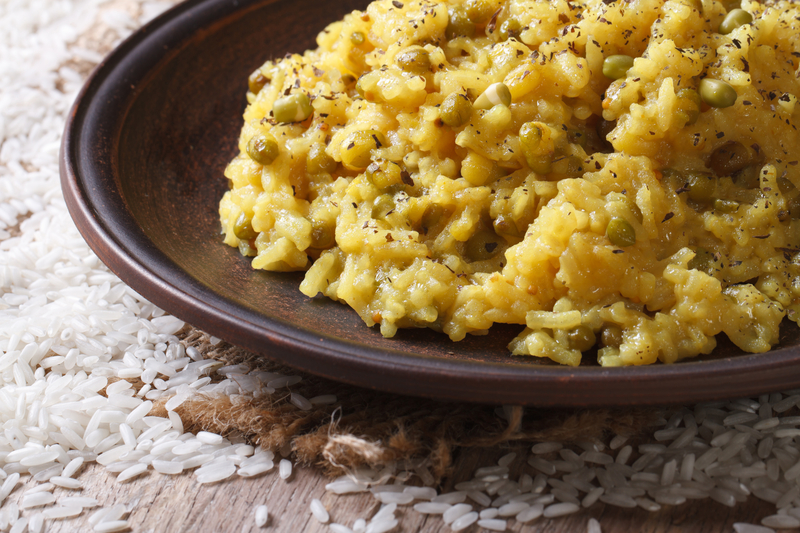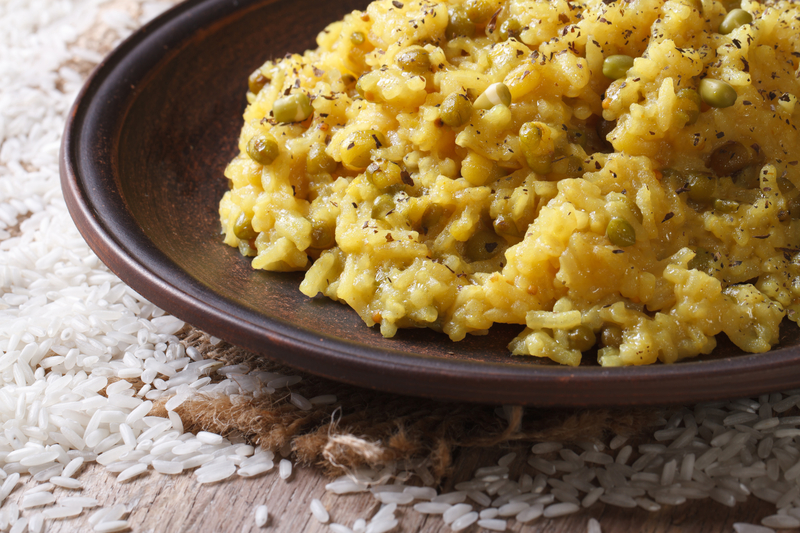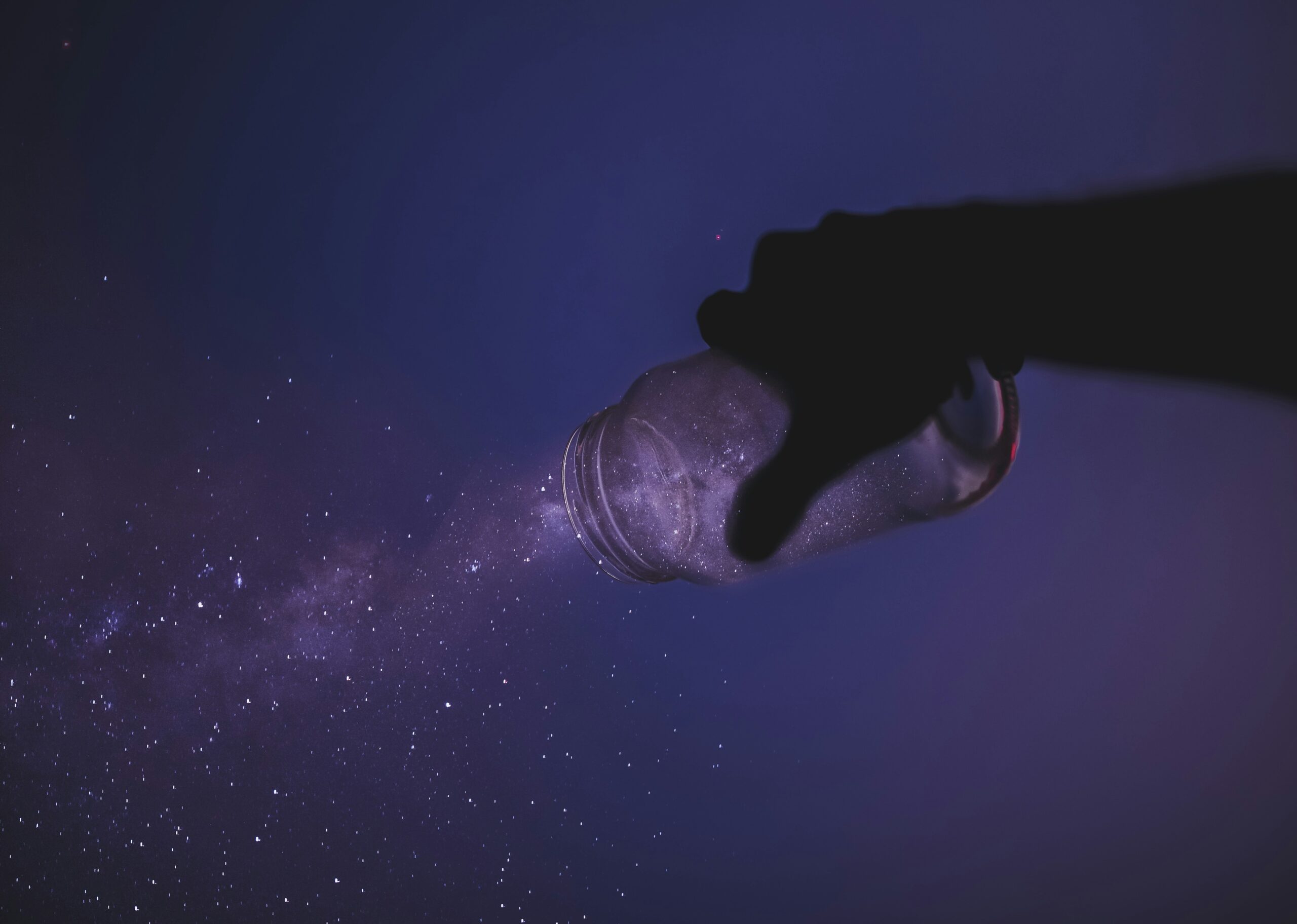by Shama Palmer
I was listening to an episode of MasterChef some months ago. The chefs were asked to cook their go-to comfort food. Each one opted for something “naughty but nice”, their own personal indulgence food. I chuckled at myself knowing that was I ever in such a competition, my go-to comfort food would likely be viewed by comparison as pretty square and boring. Not that I never go astray and enjoy the things we’d all like to avoid - probably a little more often than I’d like to confess to in stressful times.

However, in those challenging times when I finally wake up to the fact that I need to regroup and get back into balance, to “come home to myself”, there is a wonderfully nourishing and soothing food I like turn to. It eases and helps to restore the digestive system and organs of elimination, and is tri-doshic which means it can help bring balance back to all the doshas, having a stabilising effect not only on the body but also the mind. It is a wonderful food to eat as part of a cleansing regime. I’m talking about kitchari.
Kitchari (also known as khichdi) is a traditional food used in ayurveda during cleansing programmes and also to support the body in times of rehabilitation. It is rejuvenating as well as cleansing, made from mung beans and white basmati rice which are cooked to a gruel-like consistency and flavoured with delicious digestion-boosting spices. The softness of the food is said to create a soothing repair of the intestinal lining and gently supports the villi (small finger-like projections of tissue that cover the intestinal lining to increase the surface area of the intestines for greater absorption of nutrients). Kitchari creates the perfect environment for the good bacteria lining the villi to proliferate. An effect of kitchari in the small intestine therefore is to strengthen the villi and thereby to help heal and protect against leaky gut syndrome, in which the gut lining is damaged allowing undesirable toxins and undigested food particles to enter the bloodstream, which in turn leads to a whole host of health complications.
I hope it therefore makes perfect sense to you why kitchari is a great food to introduce to your body at this time of year. It will support your internal organs to rest and give them time to clear toxins from the body after the indulgences of the festive season, as well as restore strength to the intestinal system. I like to eat kitchari almost as a mono-diet, making a large pan daily for 3 to 7 days and enjoying it for lunch and supper with seasonal steamed vegetables and healing green smoothie soups. Try it for yourself for a day, two days, three days. Sip warm water throughout the day, and frequent cups of fresh made ginger tea. Ginger is also tri-doshic, and a great tea to help cleanse toxins held deeply in the body’s tissues.
Ayurvedic Kitchari

Ingredients:
1 cup yellow (preferably) or green mung dhal
1 cup white basmati rice
½-1” piece of fresh root ginger, grated
½ tsp black mustard seeds
½ tsp ground turmeric powder
½ tsp cumin seeds
½ tsp cumin powder
½ tsp coriander powder
Rock salt to taste
1 pinch asafoetida
Small handful of fresh chopped coriander leaves
1 litre filtered water
Organic ghee (optional)
Method:
1. Carefully sort through the rice and dahl and remove any stones. Wash the mung dahl and white basmati rice separately in a sieve until the water runs clear.
2. Bring the 1 litre of filtered water with salt to boil in a pan, then turn the heat down to a simmer and add the spices. Next, add the mung dahl and white basmati rice. Cook on a low heat until the kitchari becomes soft, like a baby-food consistency, adding extra water if needed.
3. Once the kitchari is prepared, serve piping hot dressed with chopped fresh coriander leaves, an optional ½-1 tsp of organic ghee and extra salt to taste if needed. Coconut oil can be a nice (and also dairy-free) alternative to ghee in this dish. You can personalise the dish to suit your ayurvedic constitution: if you are a Vata type constitution, you can reduce the ratio of mung dahl to rice. Kapha types can reduce the ratio of rice to mung dahl.
Complementary Ginger Tea
Ginger is known as the universal spice in ayurveda, and is also tri-doshic. It has so many incredible benefits and is a good balancing, soothing tea to drink throughout the day as part of a kitchari cleanse. To make ginger tea, grate 1” piece of fresh root ginger and add to one litre of filtered water.
Bring the water and ginger to the boil in a pan. Once the water starts to boil turn the heat off and let the ginger steep in the water for 20 minutes. Enjoy throughout the day.
Disclaimer: If you are under the care of a doctor or have a health condition, please always check with
your primary carer before starting any cleansing protocol.

About the author
Sara Palmer (Shama) is an ayurveda practitioner and registered senior yoga teacher and therapist. For 1-1 Ayurveda consultations or for details of Shama's Ayurveda Yoga Retreats in the UK and Cyprus, please visit www.loveyogahealing.com
More from this author:
The Wisdom of Ayurveda: Festive Recipes for the Winter Season
The Wisdom of Ayurveda: Beating the Indigestion Blues
The Wisdom of Ayurveda: Menopause
 However, in those challenging times when I finally wake up to the fact that I need to regroup and get back into balance, to “come home to myself”, there is a wonderfully nourishing and soothing food I like turn to. It eases and helps to restore the digestive system and organs of elimination, and is tri-doshic which means it can help bring balance back to all the doshas, having a stabilising effect not only on the body but also the mind. It is a wonderful food to eat as part of a cleansing regime. I’m talking about kitchari.
Kitchari (also known as khichdi) is a traditional food used in ayurveda during cleansing programmes and also to support the body in times of rehabilitation. It is rejuvenating as well as cleansing, made from mung beans and white basmati rice which are cooked to a gruel-like consistency and flavoured with delicious digestion-boosting spices. The softness of the food is said to create a soothing repair of the intestinal lining and gently supports the villi (small finger-like projections of tissue that cover the intestinal lining to increase the surface area of the intestines for greater absorption of nutrients). Kitchari creates the perfect environment for the good bacteria lining the villi to proliferate. An effect of kitchari in the small intestine therefore is to strengthen the villi and thereby to help heal and protect against leaky gut syndrome, in which the gut lining is damaged allowing undesirable toxins and undigested food particles to enter the bloodstream, which in turn leads to a whole host of health complications.
I hope it therefore makes perfect sense to you why kitchari is a great food to introduce to your body at this time of year. It will support your internal organs to rest and give them time to clear toxins from the body after the indulgences of the festive season, as well as restore strength to the intestinal system. I like to eat kitchari almost as a mono-diet, making a large pan daily for 3 to 7 days and enjoying it for lunch and supper with seasonal steamed vegetables and healing green smoothie soups. Try it for yourself for a day, two days, three days. Sip warm water throughout the day, and frequent cups of fresh made ginger tea. Ginger is also tri-doshic, and a great tea to help cleanse toxins held deeply in the body’s tissues.
However, in those challenging times when I finally wake up to the fact that I need to regroup and get back into balance, to “come home to myself”, there is a wonderfully nourishing and soothing food I like turn to. It eases and helps to restore the digestive system and organs of elimination, and is tri-doshic which means it can help bring balance back to all the doshas, having a stabilising effect not only on the body but also the mind. It is a wonderful food to eat as part of a cleansing regime. I’m talking about kitchari.
Kitchari (also known as khichdi) is a traditional food used in ayurveda during cleansing programmes and also to support the body in times of rehabilitation. It is rejuvenating as well as cleansing, made from mung beans and white basmati rice which are cooked to a gruel-like consistency and flavoured with delicious digestion-boosting spices. The softness of the food is said to create a soothing repair of the intestinal lining and gently supports the villi (small finger-like projections of tissue that cover the intestinal lining to increase the surface area of the intestines for greater absorption of nutrients). Kitchari creates the perfect environment for the good bacteria lining the villi to proliferate. An effect of kitchari in the small intestine therefore is to strengthen the villi and thereby to help heal and protect against leaky gut syndrome, in which the gut lining is damaged allowing undesirable toxins and undigested food particles to enter the bloodstream, which in turn leads to a whole host of health complications.
I hope it therefore makes perfect sense to you why kitchari is a great food to introduce to your body at this time of year. It will support your internal organs to rest and give them time to clear toxins from the body after the indulgences of the festive season, as well as restore strength to the intestinal system. I like to eat kitchari almost as a mono-diet, making a large pan daily for 3 to 7 days and enjoying it for lunch and supper with seasonal steamed vegetables and healing green smoothie soups. Try it for yourself for a day, two days, three days. Sip warm water throughout the day, and frequent cups of fresh made ginger tea. Ginger is also tri-doshic, and a great tea to help cleanse toxins held deeply in the body’s tissues.

















